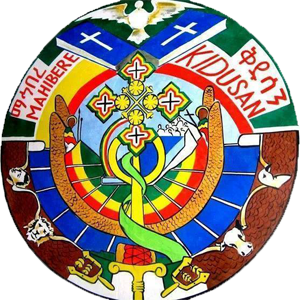About Mahibere Kidusan
Name
The association was named Mahibre Kidusan (an association in the name of Saints) Saints would be commemorated in that they abounded the secular world and sacrificed their lives to the orthodox belief for whom the prophets prophesized and apostles evangelized.
History
In 1977 E.C (Ethiopian Calendar) few students of higher education initiated the youth in the compass to become members of Sunday school and know the teachings of the churches. Later, this effort had been strengthened by students trained in the Zeaway Hamere Berehan St.Gebreil Clergy Training Monastery by the Then Arch Bishop of Shewa Abune Gorgorious II.
The movements continued in Bilatie military camp that brought all students of higher institutions in the country in 1983 E.C after a year, with the blessing of the church fathers the associations was set up by the name “Mahibre Kidusan” under the Sunday School Department of the Ethiopian Orthodox Tewahedo Church. Since then the associations has been proving spiritual service.
Vision
“Envisioning the Church fulfill its universal leadership role.”
Mission
Fructify and procure an organized, whole, eloquent, moderate, versatile and leader generation who strives in achieving the church’s mission and diligently work for her existence.
Institutional Asset
OBJECTIVES
Stand
The association shall not interfere in administrative affairs of the church and it is free from and political affiliation.
Membership
- Disciples who trained in various training institution of the church and providing ministerial activity.
- Higher institution students attending Sunday in their respective parishes.
- Member of Sunday school or/and parish that provide spiritual service after graduating from higher institution.
- The laity who support the objective of the association with their knowledge, money and labor.
Structure
Mahiber Kidusan is set under the Sunday School department of the Ethiopian Orthodox Church. It provides spiritual services by its sub centers in the dioceses all over the country and in the Diaspora.


“She lived in the Temple” Saint Jared
The kindest amongst all creatures, whom if all the world is weighed would not value as a single of her hair, the honored from the entire Mankind, and even above all the Angels, that no person could ever be able to speak of and write of her purity or holiness, the abode of God, Mother of God, The Mother of all creatures, interceder of us, Holy Mother Saint Virgin Mary entered the temple at the age of three years old with the Divine Will of God, on Tahesas 3.
Prophet Elijah
Dear Children of God, how are you? How have you been in this fasting season of the prophets? Are you fasting and praying through it? What about attending Churches specially on the Sabbaths? Children, these are vital (very important) matters and Christian endeavors (works) that we are expected to perform in our spiritual lives.
Children, do you remember our lesson about prophets and their service to the Lord? if so good!And for now we will tell you the story about Prophet Elijah, in which his feast days are Tahesas 1 and Tir 6.
“A man of God” (1 Samuel 9:6)
Just as there exist true prophets who are “A man of God” living under His commandment and rule, many false prophets defying the Lord’s law have resided in this world these days. History recites their existence from the era of Prophets, Apostles and still in this generation.
“Do not be Lukewarm!”
Our lives are amid the trials of cold, hot or lukewarm. Saint John described these three circumstance as “I know your works, that you are neither cold nor hot. I could wish you were cold or hot. So then, because you are lukewarm, and neither cold nor hot, I will vomit you out of My mouth.” (Revelation 3:15-16)
The Twenty-Four Heavenly Priests, Saint Seraphim
The Heavenly Priests, Saint Seraphim are the highest hierarchy in the tribe of the Angel’s World, the closest to God, which the Book of Synaxarium refers them as, “The Twenty-Four Elders.”